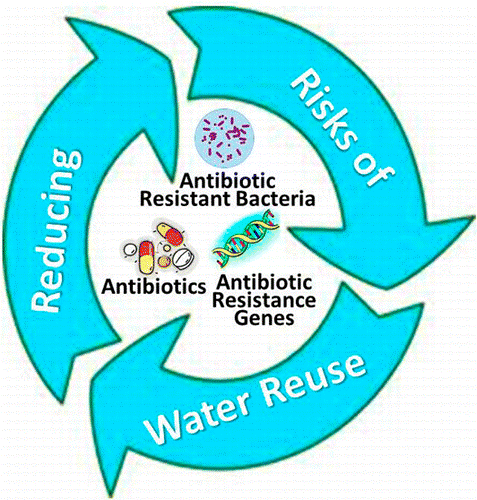Antibiotic Resistant Genes and Drinking Water Pathogens

Guest Speaker: Dr. Amy Pruden, W. Thomas Rice Professor of Civil and Environmental Engineering at Virginia Tech
By Rebecca Kriss, PhD Student, Virginia Tech Department of Civil and Environmental Engineering
What are Antibiotic Resistant Genes (or ARGs) and drinking water pathogens and how are they getting into our drinking water and wastewater? What does this mean for us as a society? Dr. Amy Pruden, the W. Thomas Rice Professor of Civil and Environmental Engineering at Virginia Tech, described her work in these areas to the 2020 Spring Water for Health Seminar students.
The 2017 United Nations Environmental Assembly identified “growing antibiotic resistance” as “one of the biggest global health concerns of the twenty-first century”[1]. Antibiotics can enter the environment via wastewater and agricultural sources, then interact with microbes present in the environment. Microbes can develop a resistance to these antibiotics and can contaminate drinking water sources. This is particularly concerning because water represents a variety of potential exposure routes including inhalation, dermal, and ingestion. Next generation sequencing has allowed scientists like Dr. Pruden to detect many genes at once, including a variety of genes that give microbes antibiotic resistance. This allows researchers to screen for many genes, but also presents a challenge—the massive amounts of data that come with this analysis. Dr. Pruden’s research group has used sequencing techniques to investigate differences in antibiotic resistance genes present in sewage around the world as well as in water treatment and water reuse situations. This research helps to understand the spread of anti-biotic resistance, the effects of potential regulations/mitigation measures, and the potential risks associated with water reuse and source contamination.
Dr. Pruden also described her team’s work researching drinking water pathogens, such as Legionella pneumophila, the organism that causes legionnaires disease. These organisms usually grown on biofilms inside of the pipes that make up a building’s plumbing. The team is investigating what makes these organisms grow better in some pipes, but not others. In particular, the team investigated the effects of pipe material, water quality parameters, water stagnation/use conditions, nutrient availability, and changes in water temperature on the microbial communities in test pipes. They found that water quality and higher flow were associated with more Legionella pneumophila and that the organisms seem to grow best at 51 deg. Celsius.
When asked if she trusts drinking tap water, Dr. Pruden recommended the “trust but verify” approach, saying that she drinks tap water, but that one should verify water quality using water quality reports, independent tests, and consider using point of use filters. She noted that bottled water can have its own problems, including problems related to the plastic the water is stored in and the difference in water quality regulations for municipal water vs. bottled water. However, she does note that immunocompromised populations and other risk groups may want to take greater precautions if concerned about particular risks.
[1] UN Environment. Frontiers 2017: Emerging Issues of Environmental Concern. United Nations Environment Programme. https://www.unenvironment.org/resources/frontiers-2017-emerging-issues-environmental-concern.


